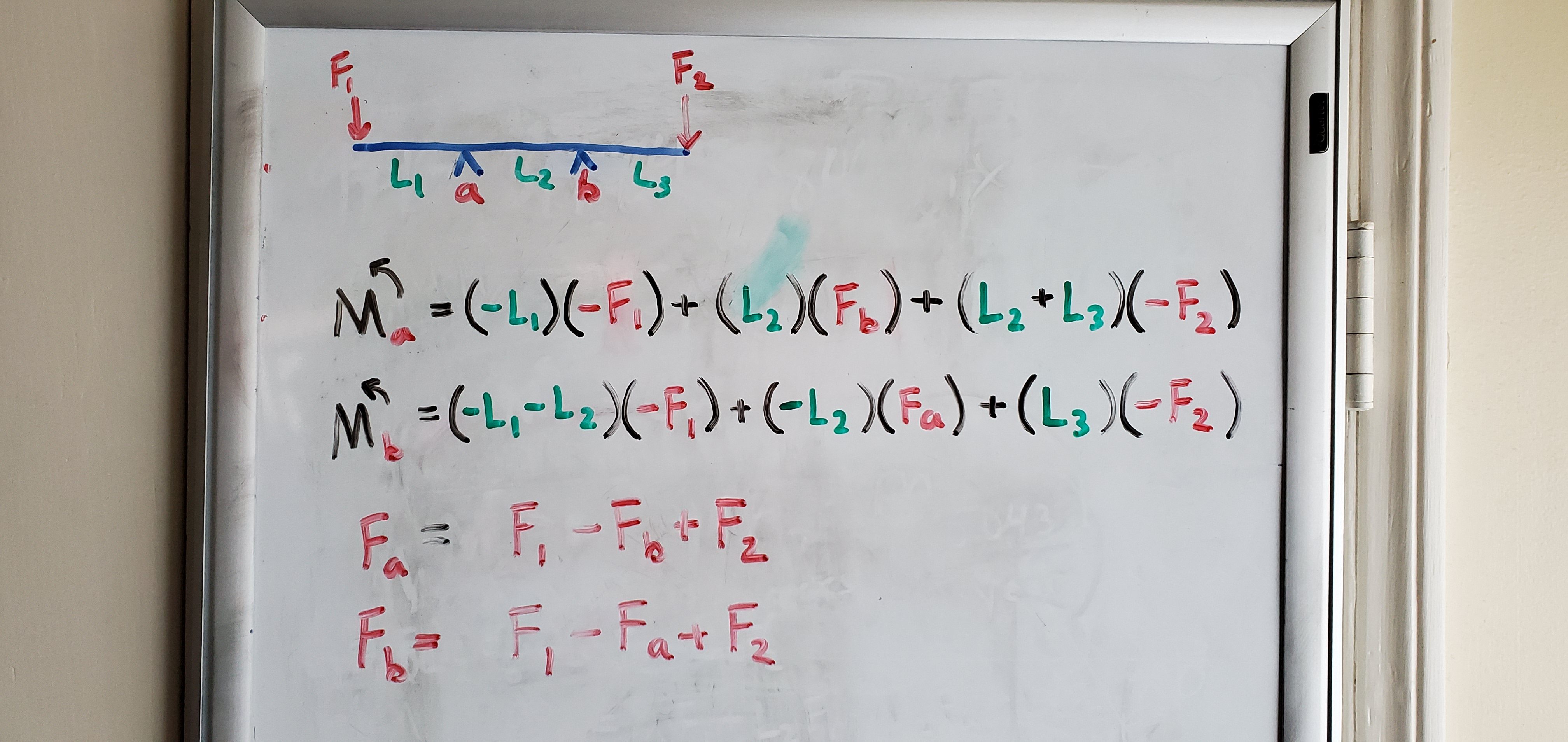- 16,432

- United Kingdom
The question I'm trying to get my head around is this:

The blue beam is a rigid piece, attached to nothing, but resting on a surface at points A and B. Forces are being applied, and measured at F1 and F2 - but the measurement is the sum of forces being directly applied downwards, and resultant forces from moments in the beam. L1, L2 and L3 are all unequal, and F1 and F2 can be measured as unequal. How would I calculate what the forces at A and B were?
Now, I'm looking at this, and I'm thinking to myself... I'm over thinking this... but for example, F2 exerts a downwards force at B and A using F1 as a pivot. At the same time, F2 exerts an upwards force at A because it also uses B as a pivot. F2 exerts an upwards force on F1, and vice versa...
So if the indicators at both F1 and F2 both read 50N (for example), and L1 and L3 are unequal, then the forces at A and B are going to be different... but how to calculate what they are?
edit: to be clear the force being applied at F1 and F2 are unknown but the total resultant force at F1 and F2 is.
The blue beam is a rigid piece, attached to nothing, but resting on a surface at points A and B. Forces are being applied, and measured at F1 and F2 - but the measurement is the sum of forces being directly applied downwards, and resultant forces from moments in the beam. L1, L2 and L3 are all unequal, and F1 and F2 can be measured as unequal. How would I calculate what the forces at A and B were?
Now, I'm looking at this, and I'm thinking to myself... I'm over thinking this... but for example, F2 exerts a downwards force at B and A using F1 as a pivot. At the same time, F2 exerts an upwards force at A because it also uses B as a pivot. F2 exerts an upwards force on F1, and vice versa...
So if the indicators at both F1 and F2 both read 50N (for example), and L1 and L3 are unequal, then the forces at A and B are going to be different... but how to calculate what they are?
edit: to be clear the force being applied at F1 and F2 are unknown but the total resultant force at F1 and F2 is.

 Will keep trying anyway, perhaps when I post some working it will become clearer. This is a mental block that probably shouldn't be a mental block.
Will keep trying anyway, perhaps when I post some working it will become clearer. This is a mental block that probably shouldn't be a mental block.